by Junsaku Koizumi
A Dragon For Your Drawing Room?
Magnificent representations of the mythical Far-Eastern Dragon
Signed, limited edition prints
ALEXCIOUS is proud to offer a limited number of Suiboku-ga (ink & wash) 'Dragon' prints taken from the artist's original templates (koshitazu). Junsaku Koizumi painted these templates prior to creating his massive, breathtaking 'Dragons' for the ceilings of Japan's most famous temples. The print is signed by the artist himself.
Junsaku Koizumi (Oct. 26, 1924 – Jan. 9, 2012)
Junsaku Koizumi passed away in January 2012 aged 87. A prolific artist since childhood, he was to become one of the most notable of his generation. Koizumi’s three greatest achievements are his ceiling representation, Unryu (Dragon amid Clouds), painted in 1997 for the 750th anniversary of the founding of Kencho-ji Zen Buddhist Temple in Kamakura, the dramatic 2002 ceiling painting of So-ryu (Twin Dragons) at Kennin-ji (Kyoto’s oldest Zen temple) installed to commemorate the temple's 800th anniversary, and the painting of forty paper screens in 2010 at the Todai-ji Buddhist Temple in Nara Prefecture (the largest wooden structure in the world and a listed UNESCO World Heritage Site).
Brief profile
Junsaku Koizumi was born in Kamakura, Kanagawa in 1924. While attending Tokyo School of Fine Arts and Music (Geidai), he studied under the famed artist Kyujin Yamamoto (1900-1986). Koizumi eventually graduated in 1952 - the war years and ill-health caused some delay.
Despite over twenty years of regularly showing pieces at public exhibitions, Koizumi was never accepted as a member of any group. Sometimes referred to as the ‘noble loner’, he showed his work publicly for the last time in 1973. Koizumi won his first and only prize when his painting ‘Okuizu Landscape’ was selected for the Yamatane Art Museum Award for Excellence in 1977. At age 53, his art finally became well known.
Suiboku-ga (Sumi-e)
Suiboku-ga, also called Sumi-e, is a Japanese monochrome ink and wash painting style first developed in China during the T’ang Dynasty (618-907). The art was further developed into a more polished style during the Song Dynasty (960-1279). Zen Buddhist monks introduced Suiboku-ga to Japan in the mid-14th century. It reached its zenith in the Muromachi period (1338–1573) with masters such as Sesshū Tōyō creating landscapes that were uniquely Japanese.
Capturing the unseen
The bold use of black ink strokes and washes allows Suiboku-ga artists to eliminate all but the essential essence of their subject, an aim closely related to the pursuit of Zen Buddhism. Simply put, the goal of Suiboku-ga is not simply to reproduce the appearance of the subject, but rather to capture its soul. To paint a horse, it’s crucial for the artist to fundamentally understand its temperament, and not just represent its muscles and bones. In painting a flower, emphasis is placed on conveying its vitality and fragrance rather than perfectly harmonizing its petals and colors. As it captures the unseen, Suiboku-ga may be regarded as an early form of expressionistic art.
Shading
Suiboku-ga shading is achieved by varying ink density produced by grinding an ink stick in water. Suiboku-ga artists spend years practicing basic brush strokes to refine their brush movement and ink flow. In the hand of a master, a single stroke can produce astonishing variations in tonality, from deep black to silvery gray. Thus, in its original context, shading means more than just dark-light arrangement, it is the basis for the beautiful nuance in tonality unique to both Suiboku-ga painting and brush-and-ink calligraphy.
Koizumi’s realism
“The origin of my paintings is realism. Therefore, I sketch in great detail; I’m very particular about that. Whether my subject is mountains or flowers or vegetables, I confront my subject and, in sketching it, I try to capture the living energy in it. It’s been said that my paintings can be scary, depending on how you look at them. That’s the spirit, the power, which they have. In order to achieve that, sketching is essential.”
Product Details
| Selling Agency | Japan |
|---|---|
| Specification | Specifications
Kencho-ji Temple: Un-ryu (Dragon amid Clouds) |
・All the products handling in ALEXCIOUS are the genuine products from the original makers.
・The colors in the product photos may differ slightly from the actual product.
・The design, specifications, appearance, and price of products are subject to change without notice.
Customer Reviews
-
建長寺の想い出
By 太兵衛Age: 50s建長寺の天井画の迫力、感動が蘇る本格的な 色紙です。
Dragon Limited Edition Print Signed by Junsaku Koizumi - art
SKU: A1-K011-C001-01-01
Kami Ya Co., Ltd.
Shipping Fee
¥ 5,200(Approx. USD 38.14)

Contact us
- Inquiry Form(We'll reply within 24 hours)
 Returns
Returns



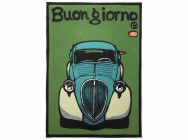
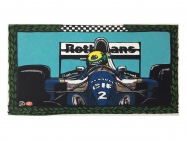
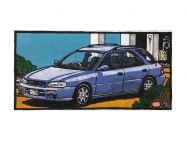
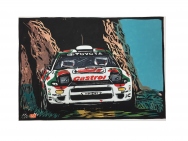
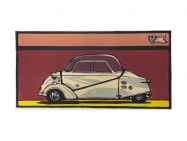
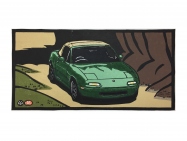

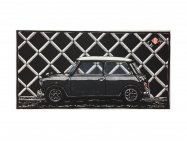
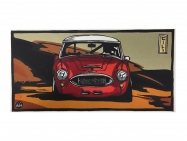

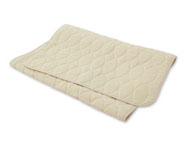


 View
View
 View
View


